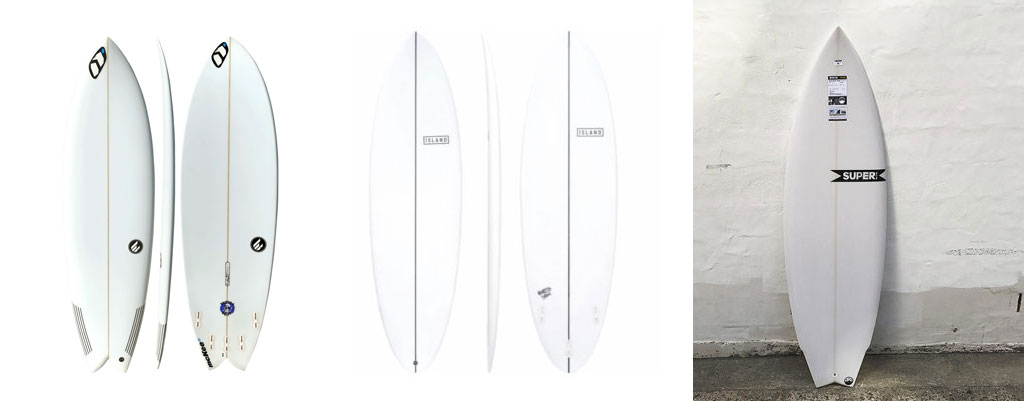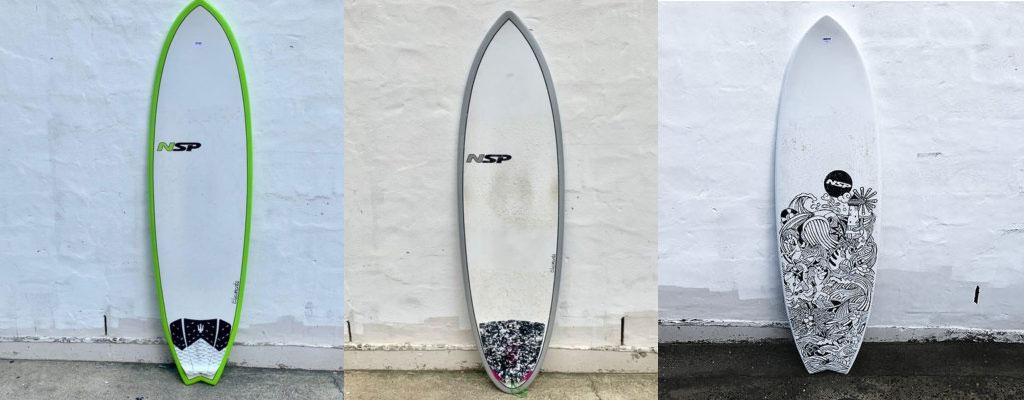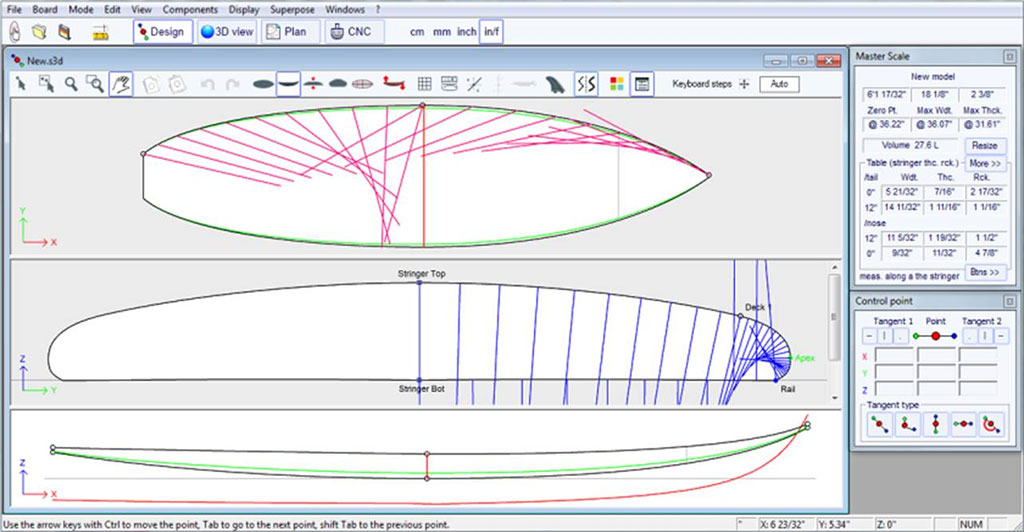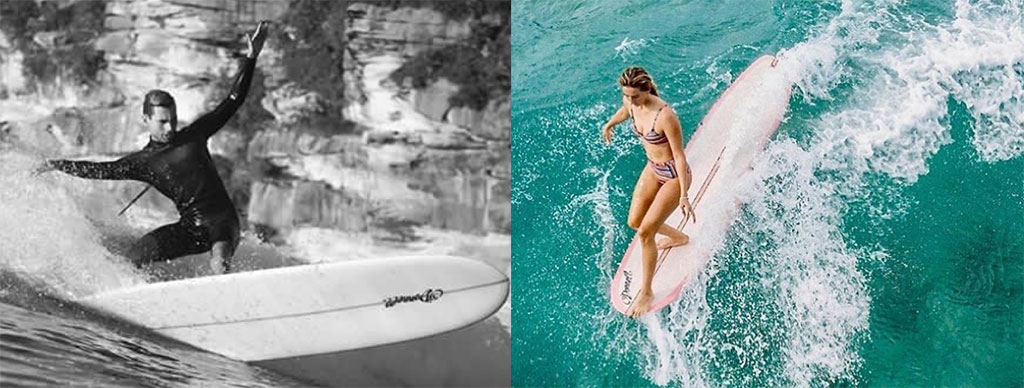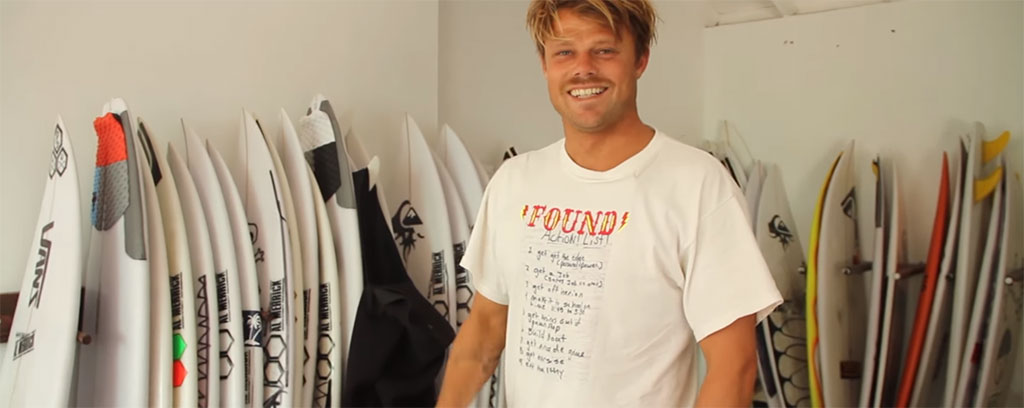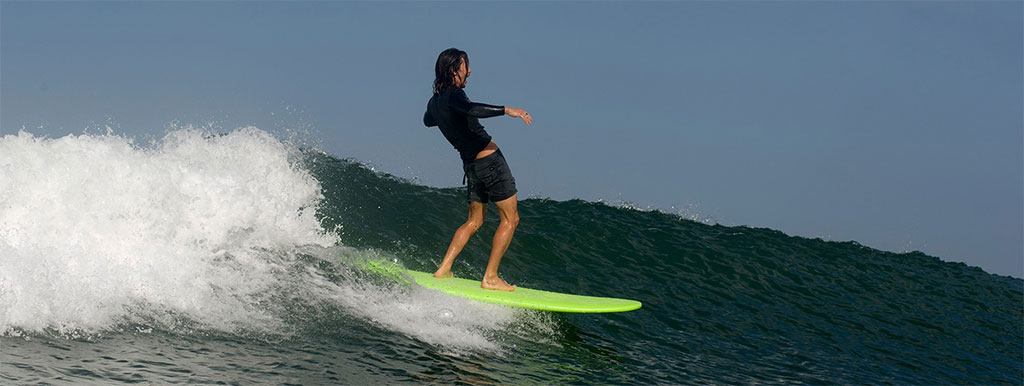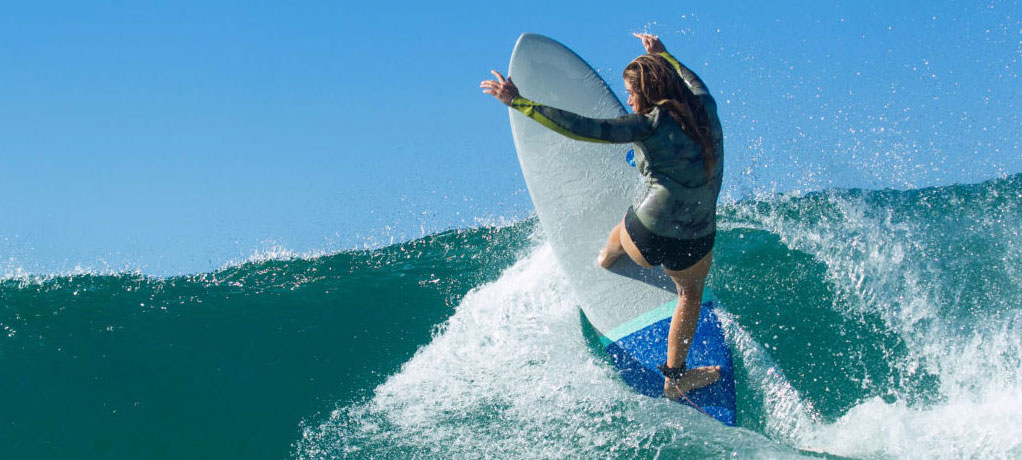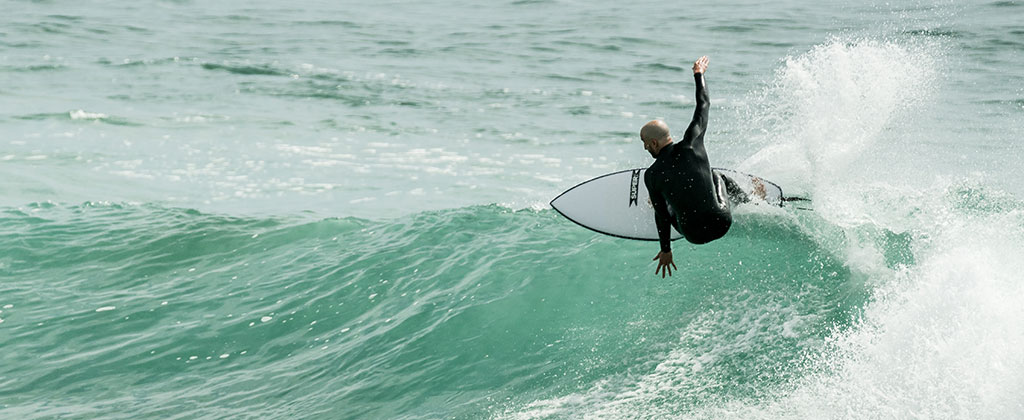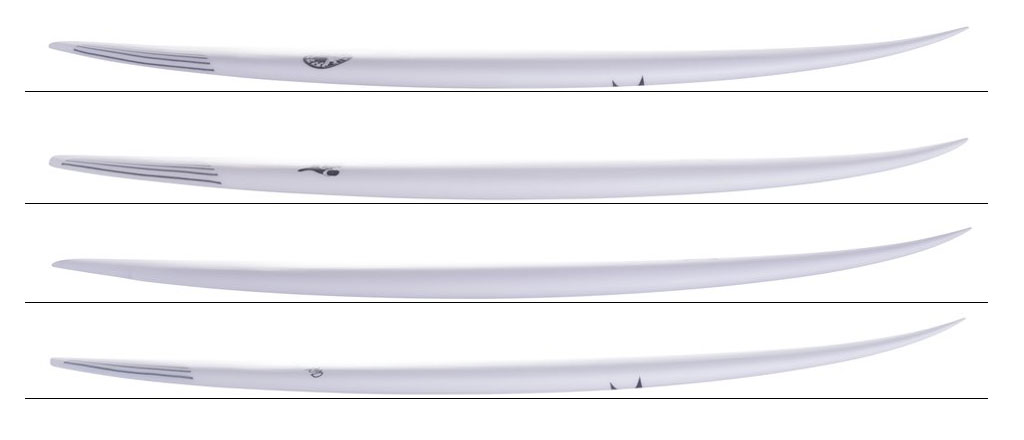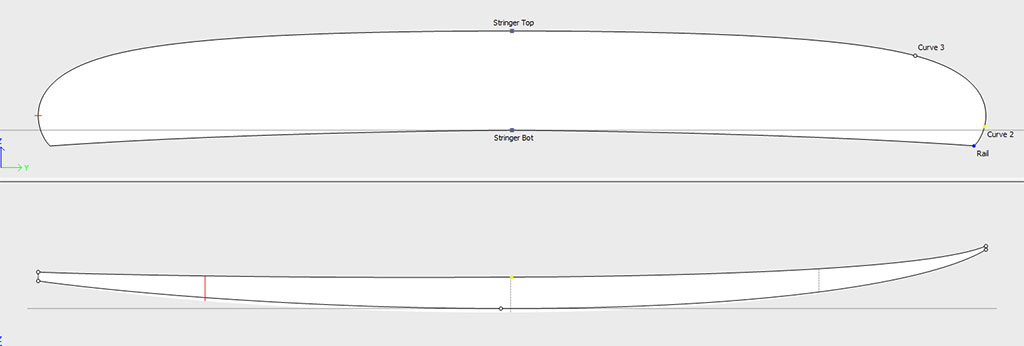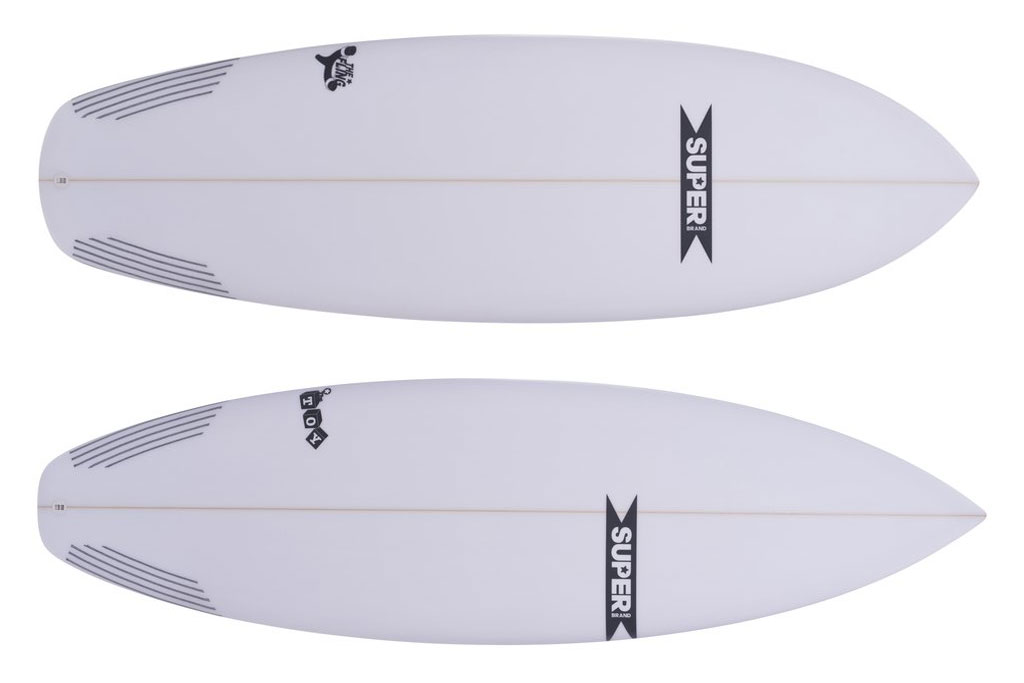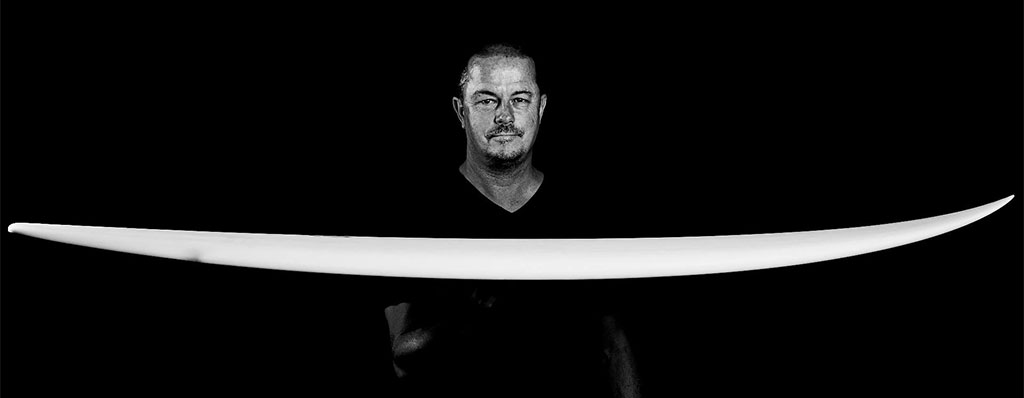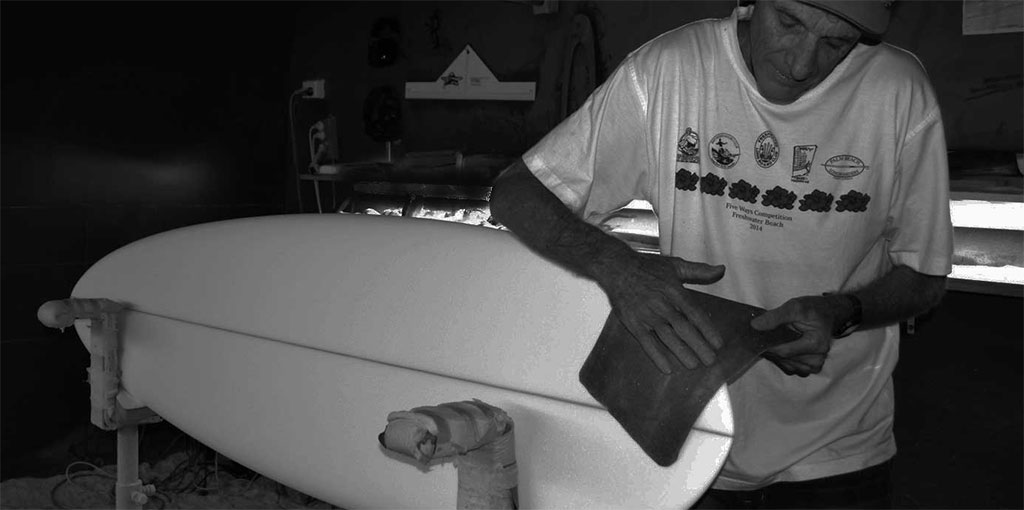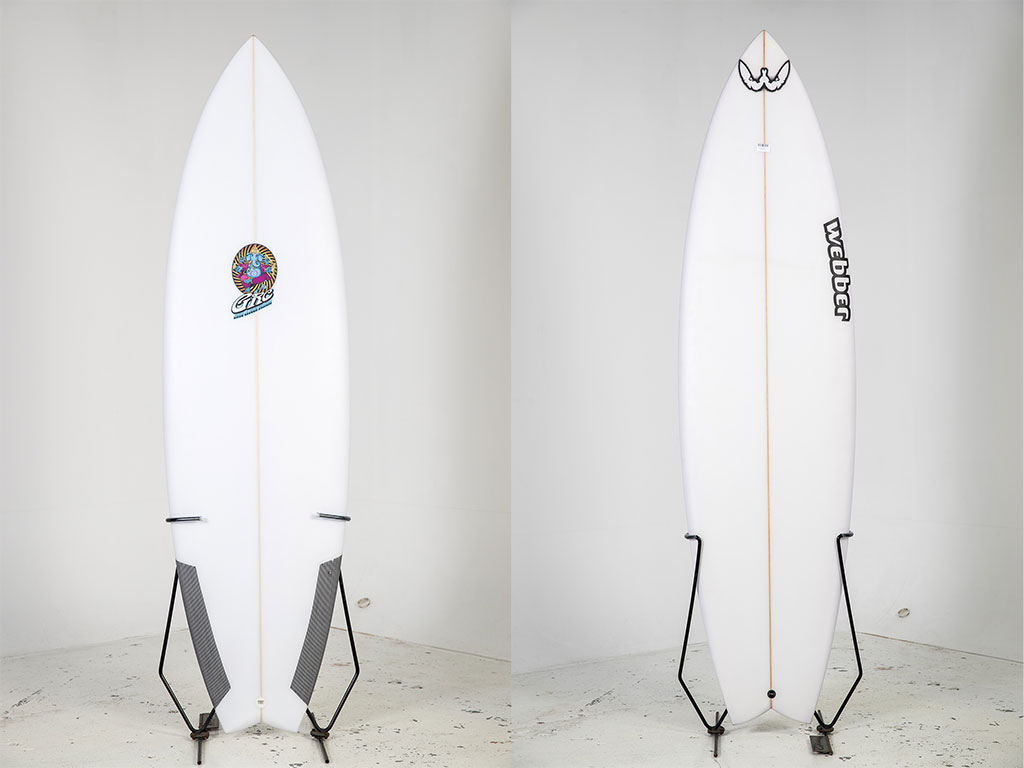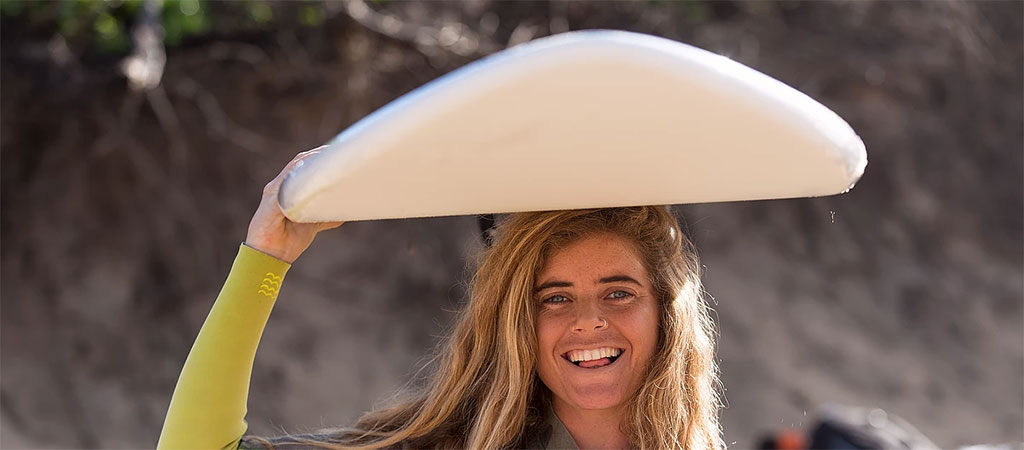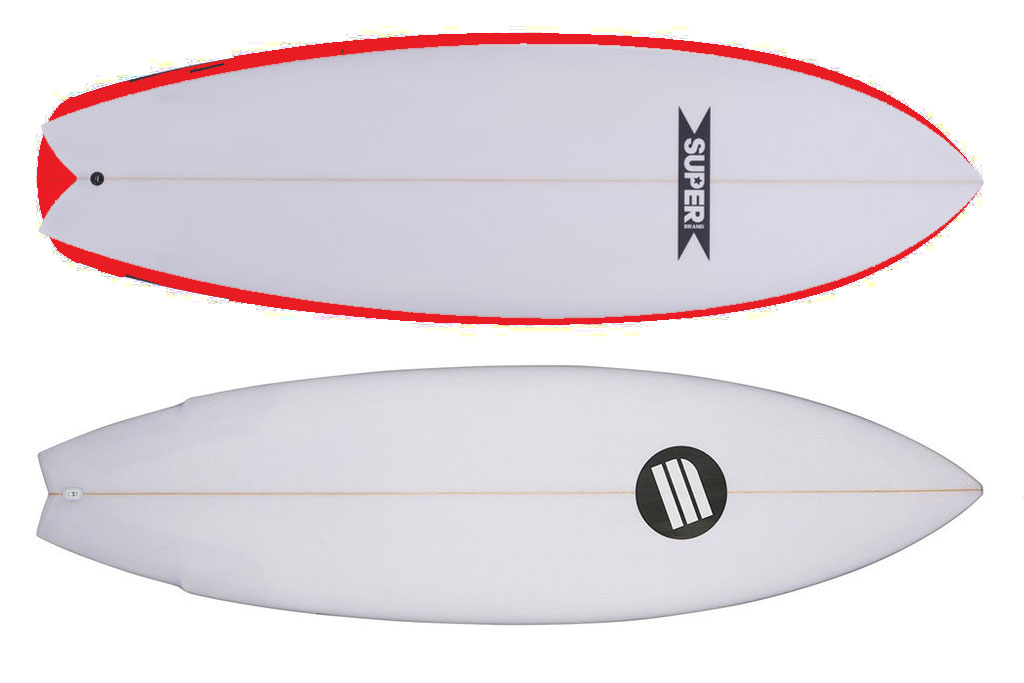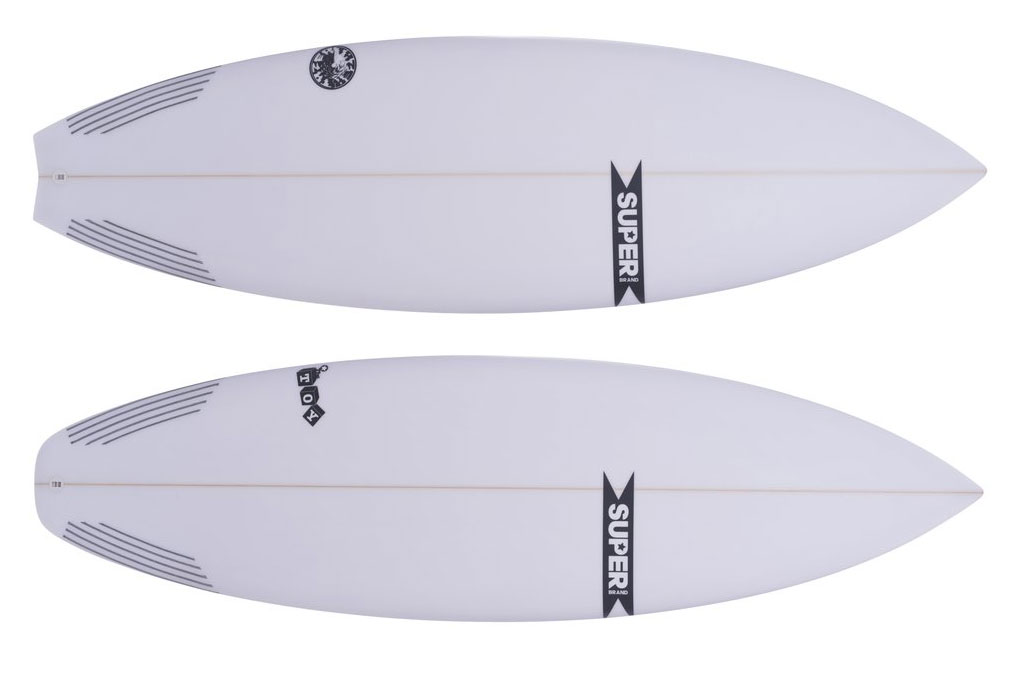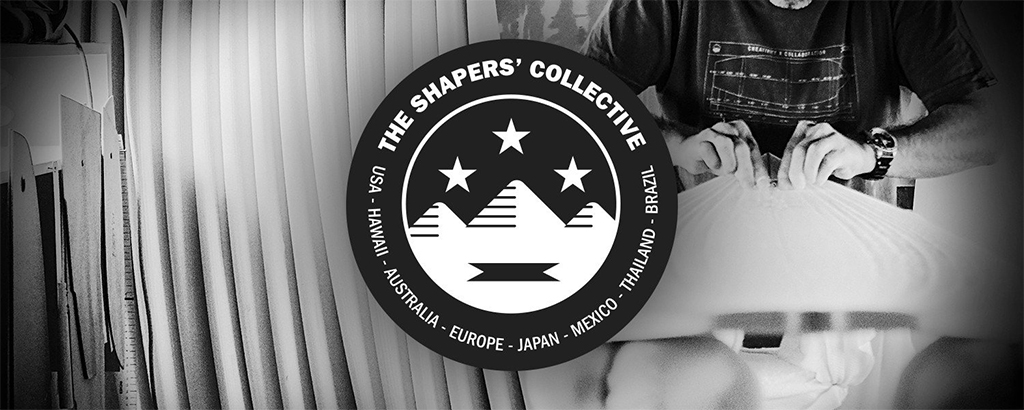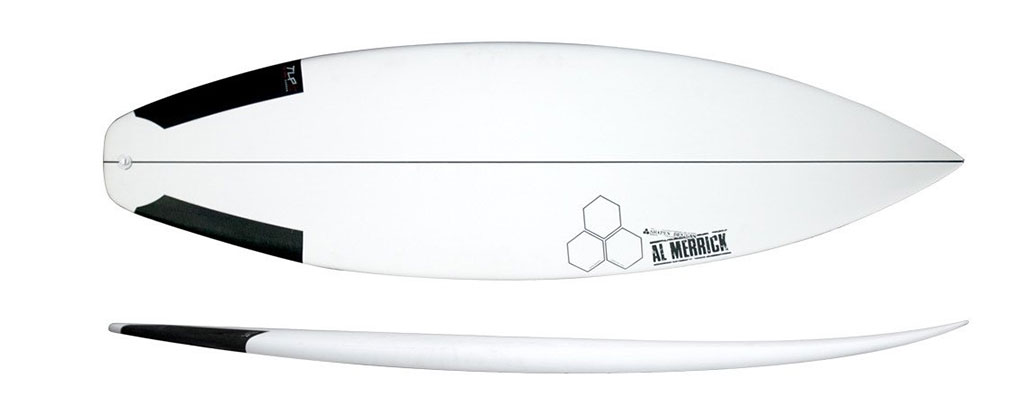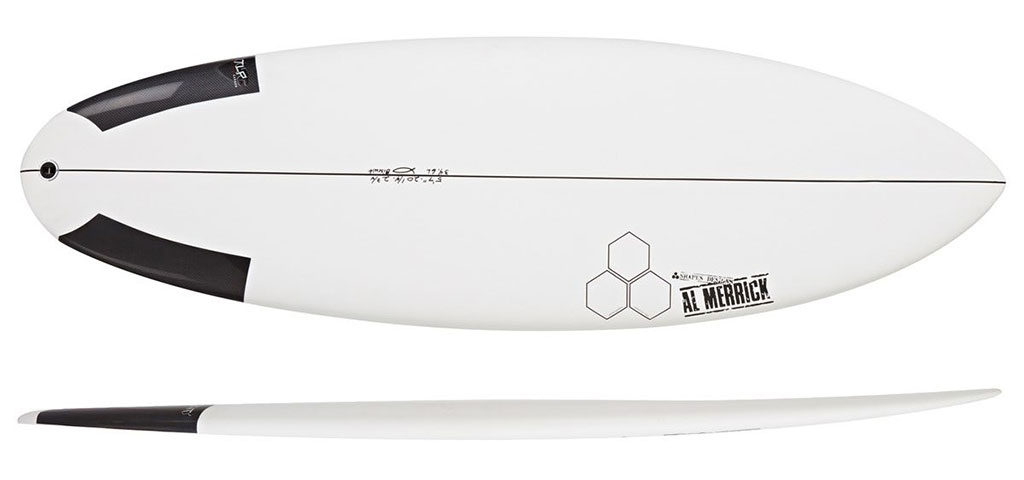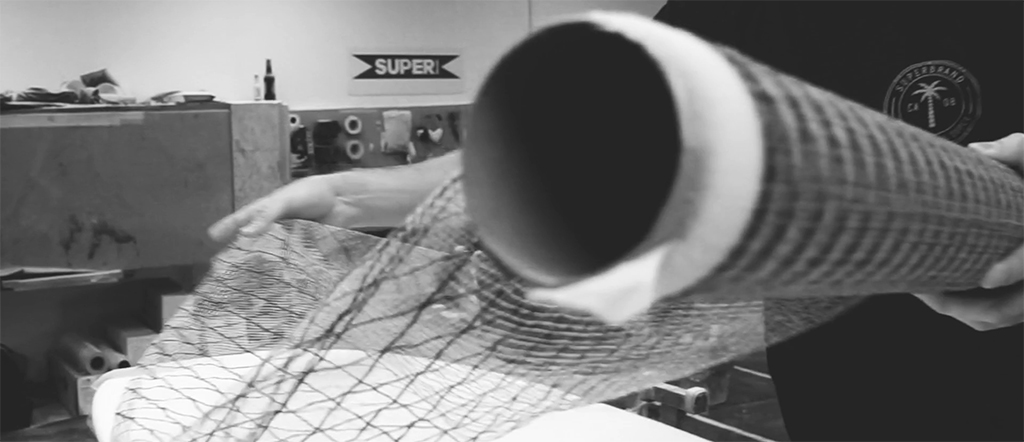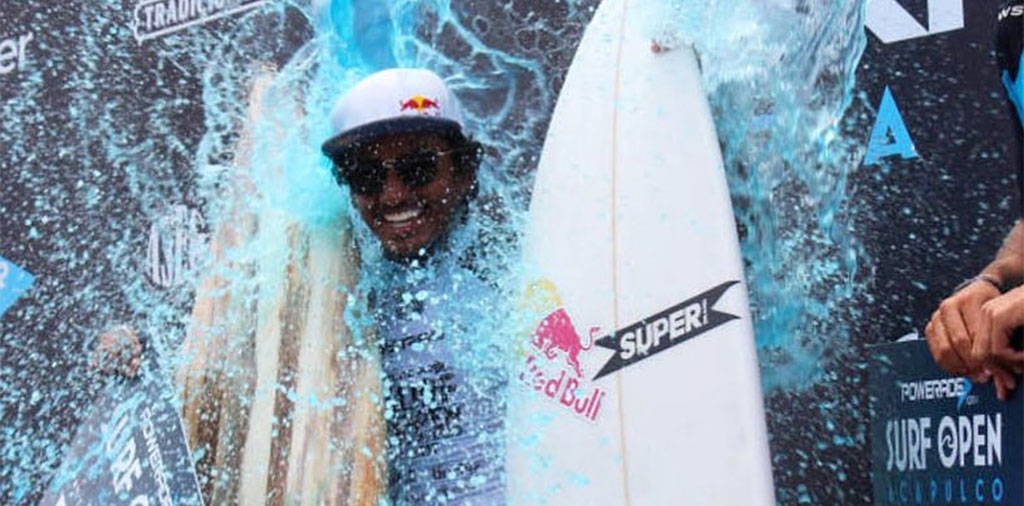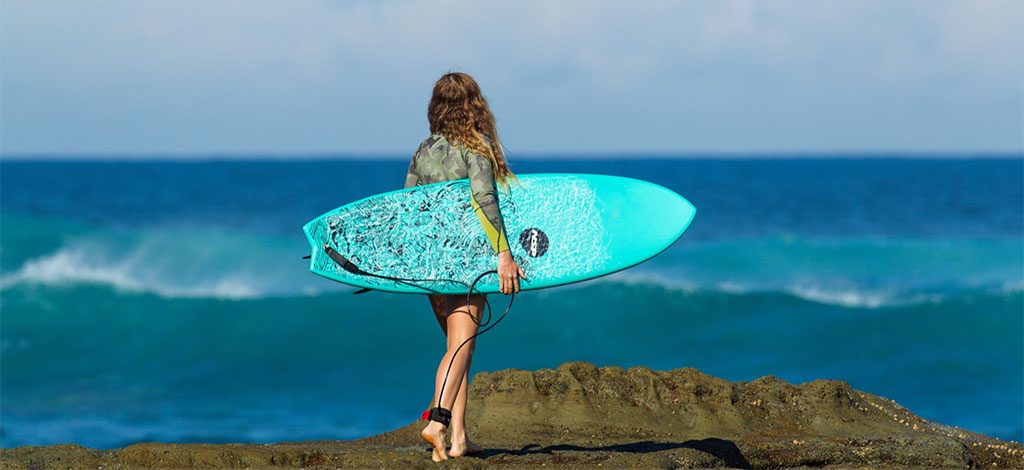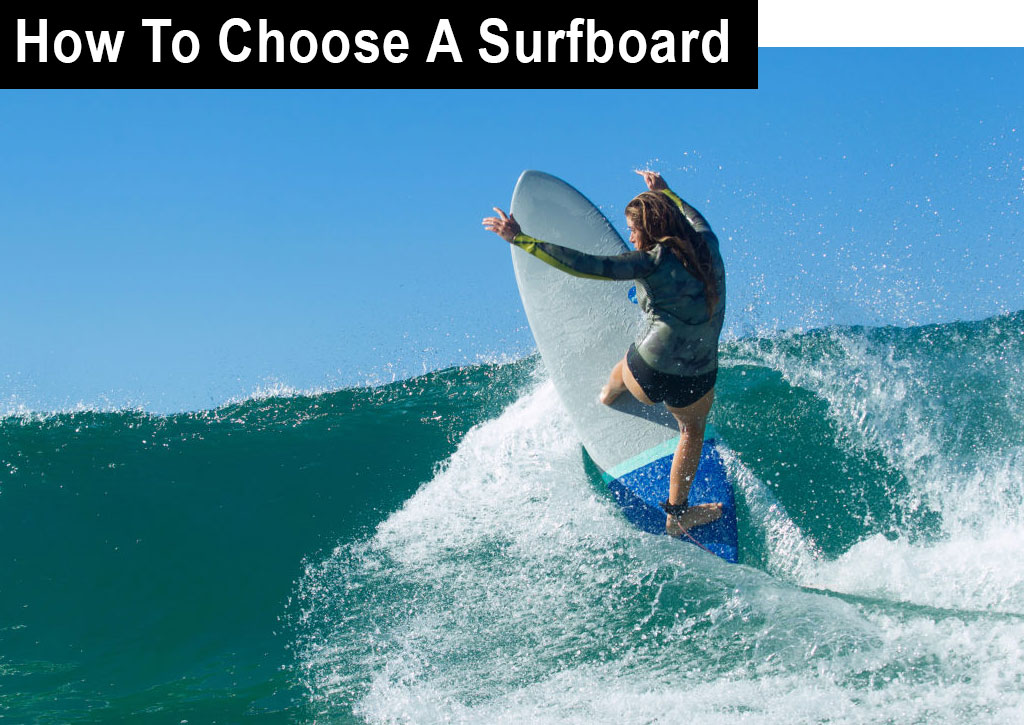
How To Choose A Surfboard – Intermediate
How To Choose A Surfboard at the Intermediate level can be determined by how you want to progress. What style of surfing appeals to you? What waves will you surf? Getting this right will direct you to the right board or boards that will have you surfing your best.
The article below addresses Intermediate surfboards. Our other articles in this series address Beginner and Advanced surfboards.
For 2021 – How To Choose An Intermediate Surfboard
Epoxy Options
Epoxy boards are now readily available at good value. Epoxy construction gives you a lighter stronger board with a performance benefit in small waves. Still, check the brand and shaper for a proven model. On the right more epoxy boards are also available second hand. Being stronger epoxy boards will have less dents and retain the pop and performance when compared to a PU board so are a good value good performance option to consider
Epoxy surfboards are becoming available in a greater number of models and at good value. Epoxy boards perform especially well in small waves. So with your Intermediate surfing while you may have progressed to bigger waves, you likely ‘train’ more effectively in smaller waves. The epoxy boards are typically lighter and faster so will allow you to still do good moves in smaller weaker waves.
With their durable construction you could consider a second hand epoxy board. While price doesn’t necessarily correlate to getting a good board, if you’re getting a board from a known brand it’s likely it’s a proven design that will give you good surfing. PU boards aren’t such a good option second hand. PU is weaker so dents a lot. It also weakens faster over time and loses its pop, its life. You don’t want to get an old dead board. Epoxy boards are strong and more durable and now with more on the market you’ll be more easily able to find one new or second hand in good condition.
NSP is a big international brand that has been producing epoxy boards for a long time. Their construction is of high quality so their second hand boards still have plenty of life in them. Here’s a selection of some of the NSP epoxy boards in our shop that have good characteristics to assist in the Beginner to Intermediate transition. You can see with a wax clean and rub they’ll will come up looking near new
Epoxy surfboard models were most common mass produced from big brands such as NSP. Now they’re common in models from your local shaper. This opens up the option for a custom epoxy board, a board with all the benefits of epoxy construction made specifically to progress your surfing, as discussed below.
Computer Boards
While not new, many more shapers are using computer programs to design their boards and cutting machines to cut them out. This opens up the opportunity for you to work with a shaper on a customer design to help you progress. If you get a shaper to custom do your first board they’ll have that on file. From there it’s easy to discuss what you’d like enhanced and to produce an accurate and enhanced next model to help you progress. Below is a cutting machine that accurately reproduces a design each time
Many more shapers are using computers to drive cutting machines for their shapes. These can be longboard and shortboard shapes. The benefit to you is that if you get a board that works you can go back to the shaper and easily and more accurately refine the characteristics you like. In the past most shapers would have a hard time of replicating your board. Now it’s a matter of loading a file. The existing file is a good place to start the discussion to progress to your next board. A shaper using a computer can easily take your feedback and enhance your current board into a new custom design to progress your surfing.
The Right Approach
Your Intermediate board will help you progress. Whether it’s a handcrafted custom longboard like those from Steve O’Donnell above or a shortboard like the proven and super durable models from NSP below. You want a board to progress past kooky Beginner moves
One aspect of your approach to surfing is an appreciation that the ocean and waves constantly change. Whether it’s the wave size that will have a big or small swell, the wind making for clean or sloppy conditions, or the tide exposing or covering a break, it’s all about change.
Above and below. The same corner break. One day flat the other about as big as it gets and still surfable. The ocean is all about constant change. Is there one board for you for all conditions?
You need to factor this in when getting your Intermediate board. Your board may feel super fast at low tide and sluggish at high. Or sliding out in bigger waves, carving when it’s smaller. Recognise that your Intermediate surfboard will have an ideal application, strengths and limitations.
Your surfing also is in transition, your skill and ability improving. Your board likewise is part of that transition. So your Intermediate board should be targeted slightly ahead of where your surfing is now to where you want it to be. It should offer you some challenge. A good well chosen Intermediate board will help you progress rapidly and as you tradeup give you maximum return toward the next surfboard in your progression.
Not Created Equal
Dane Reynolds, one of the greatest shortboard surfers of all time takes you on a tour of his garage stacked full of old boards. No, they’re not all good boards. In 15 minutes Dane takes time to pick out the select few magic boards. Less than five magic boards out of his decades of surfing . Image courtesy Channel Islands, Dane’s board sponsor
It’s worth mentioning that all boards are not created equal. There are some boards, described as magic boards, that seem to perform at a high level regardless of conditions.
On the World Tour, out of the hundreds of boards a Pro gets there’s rare boards they acknowledge as being very special. These are often only surfed at special times, such as in key event heats such as finals.
So be aware that special boards do exist. They catch waves effortlessly. They can take steep drops. Fast and they turn easily. You get comments when riding them. If one comes into your possession don’t trade it.
It’s All About You
Good surfers come in all shapes and sizes. Owen Wright is the tallest on the World Tour, and skinny, from a field covering all body types and physiques. Image courtesy Italic Studio
Looking at the World Tour and the body types of the surfers it’s evident there’s a wide range of differing physiques. So if you’re tall, short, solid or skinny, your body type will not prejudice your surfing and there’s a board that will help you progress.
Your surfing ability is closely related to the time you put in. So being a competent Intermediate surfer will require time in the surf. A good board though is a vital factor.
What Is Intermediate Level
Cruising on a Softlite Beginner board above. Below, doing a move, a re-entry. Intermediate surfing is all about moves. Your Intermediate board will help you do moves
At Intermediate level you want to competently cope with the differing surf conditions you find day to day. Faced with a variety of waves your surfing will be more challenging but offer a greater opportunity for fun and to perform.
So what will your Intermediate board help you do on the waves?
Moves.
Moves are recognised positionings of your board, turns and actions on the wave that have set names. They’re what you do to ride the wave optimally. For example a bottom turn is a move you might do to get around the crumbling section of a wave. Alternatively you could perform over that same crumbling section another move like a re-entry, top turn, or floater. Your Intermediate board should help you build up a repertoire of moves that you can perform as the wave allows.
Intermediate surfing is also about going fast, with control. This surfer is flying on his SuperBrand surfboard
The other major thing your Intermediate board must do is give you speed. Turning is good but most moves require or will be performed best with speed. Speed will also definitely help you make more waves.
If you have to struggle to make your board go fast, if you’re constantly getting caught by the foam, then swap your board. At the Intermediate level you need a board that is fast. At the Advanced level boards that may not feel fast but do turns easily can be very good, as they generate speed in turning into the critical powerful part of the wave. However at the Intermediate stage you don’t want to be putting all your energy into getting your surfboard moving. You want your board to be moving with speed so you can focus on your moves.
As you develop competence in doing moves, the way you do those moves, the placement of your hands, body posture and action you’ll start to see the emergence of your own style.
How To Choose A Surfboard – Board Principles
Do they all look the same? A stack of shortboards all with different bottom curves, rockers. Minor differences in rocker make for big differences in your surfboard and your performance
There’s certain almost universal principles that govern the design of longboards and shortboards. Familiarity with them will help you understand what to look for in your Intermediate board.
How To Choose A Surfboard – Rocker
The curve of the bottom of your board from nose to tail is called bottom curve or rocker. A flat rocker gives speed, but too flat and your board won’t turn optimally. A curved rocker gives good turning but too curved and your board won’t have speed.
Rocker starts out with simple concepts but is very sophisticated. This is where some of the magic comes in. There are certain rockers that go optimally in a wide range of conditions that make magic boards. Even with computers and cutting machines that should be able to replicate boards exactly, boards with magic rockers are elusive. There are however certain rocker dimensions you can look for indicative of the desired characteristics for your board. At the Intermediate level flatter rocker is better.
Note flatness can be different that the nose and at the tail. In the image above can you pick which board is flattest?
How To Choose A Surfboard – Bottom Shape
Screen shot from a computer shaping program showing the bottom shape. The top image shows the profile of the surfboard with a deep single concave that is shaped into the bottom of the board.
Bottom shape, not to be confused with bottom curve, is what is shaped into the bottom of your board. A concave bottom tends to be the fastest shape giving you speed. Longboards often have a concave under your chest with a vee towards the rear of the board. Shortboards have either a single concave throughout or single to double concave.
Concaves give speed. Vee gives the ability to turn. Blending these with rocker is part of the making of your ideal board.
There are numerous combinations and interrelations of rocker and bottom shape, but at the Intermediate stage you want one that is faster rather than may turn well but be slower.
How To Choose A Surfboard – Volume & Thickness
These boards are the same length. The top board has 7.5 extra liters that is 25% more volume than the lower board. It’s clear to see a lot of it is in the wide tail, which does not aid paddling nor directly aid flotation
Another surfboard characteristic is volume. This is a value described in liters, the liters of foam in your board, that indicates the float of your board. Volume needs to be used with understanding. In longboards it’s not so important at the Intermediate level.
For shortboards volume is important because you have less board and it has to float you. Volume is represented as a number, for example 25.3L for a smaller board and say 42L for a more volumed board. Note that the two volumes could be for two boards with exactly the same length, differing in thickness and width.
Where your volume is distributed is equally important. If you have two boards with identical volume, if one has a wide tail, volume will be in the tail and perhaps not under your chest. Meaning the board might not paddle well as there’s not much foam under your chest helping you float.
Rocker also plays perhaps the most important role in your board performance. In the example mentioned your board may have ideal foam, ie volume, under your chest. However if it has too much curve in the nose, ie too much rocker, it won’t paddle well as it will be pushing water. So rocker, length, height thickness and volume distribution all have to work together.
More volume is better than less, but it has to be refined in the context of the complete board design.
How To Choose A Surfboard – It All Comes Together
Master shaper Greg Webber showing the refined beauty in one of his shapes. Greg has turned out more than his fair share of magic boards for Pros and every day surfers. Local guys rave about his boards
Well designed boards crafted by expert shapers combine the various characteristics into good and great boards. You can get your own board, a board custom made for you. At the Intermediate level it’s important to get assistance from someone experienced to help you choose your board. A shaper may be willing to work with you through several boards helping you rapidly progress.
Small differences in measurements can have a big impact on your board. We’re talking about a one eighth or quarter of an inch being a big difference. It can be hard to identify and assess what the impact of these small characteristics might be but they can make your board fast or slow, responsive or dead. Different measurements work for different surfers too. So a shaper can help you work through what works for you.
How To Choose A Surfboard – Intermediate Longboard
Master shaper Steve O’Donnell brings it all together for you in a super refined longboard. His designs are so good you’ll be able to hand yours down from generation to generation
If you want to longboard the next step is to get a more refined longboard.
As a Beginner you’ve started on a longer, thicker, wider board. Now you want a more refined board, refined to suit you. The overall size should match your body type and physique. If you’re taller stay with length. If smaller come down in length.
As discussed above, your longboard should be flatter in rocker rather than curvier. It should have a fast bottom shape, ideally with concave.
It should still have generous thickness so you get good float and paddling. Where thickness is distributed is important too. You want your board finer in the nose, thicker in the middle where you lay to paddle, and thinner through the tail. Reduced thickness overall and especially in the tail will make your board responsive, easier to manoeuvre.
NSP has refined proven shapes in their lineup. Not as refined as a custom shape but these come in super durable constructions. NSP offer you one of the best returns at tradeup time
The width is not quite as important as thickness but generally boards don’t go over 22″ wide. So come down from that to match your body type. The narrower the board the easier it is to throw around but also don’t go too narrow. You risk losing planing speed and smoothness of ride.
The rails can remain thicker and boxy as this gives forgiveness and enables you to put more energy into turns, pushing and driving without your board catching. At the Intermediate stage it’s good to push hard on the rail into moves.
How To Choose A Surfboard – Intermediate Shortboard
Two Gregs. A Greg Clough design on the left and Greg Webber on the right. Two examples of ideal Intermediate shortboards that give you great fun while progressing your surfing. Note Clough’s design has a fuller nose and is fuller from the mid point to tail. Webber alternatively narrows this area making up for it with thicker rails. Different designs, both work great
The first step is to drop down from your Beginner board to a shortboard.
The length of your Intermediate shortboard is interrelated with width. So you have a few options based on how you want to surf and what type of waves you want to mainly surf.
If you’re aiming primarily to have fun in day-to-day waves at your local break an option is a board that is your height. It should be wider than a normal shortboard with fuller nose and fuller tail.
NSP shortboard offerings have the fuller nose and wider tails, though not full Fish tails. They are tried and proven designs dimensioned to fit most surfers. Construction-wise they’ll take plenty of bangs giving you one of the best returns at tradeup time
The volume must be more than enough to give you float and it can be a little thicker in the nose. Definitely thick through the area where you paddle. Thinner through the tail. The rails can remain thick and boxy as this gives forgiveness, enabling you to put more energy into turns, pushing and driving without catching.
The bottom shape should have a concave from under your chest to a single concave or double concave running through the fins.
The rocker, the most important part, needs to be pretty flat.
In this pic you can see the generous volume in an NSP shortboard, visible from front on. You would think this is not as refined and hence not as responsive for an Intermediate board should be though NSP Team Rider Kristy Delport shows you can charge on them
Neither of these boards is a Fish. Both are ideal fun Intermediate boards with fuller nose for easy paddling and wave catching and pulled in tail for good turning. The red under the top board represents the excess area a fish board would add that limits your moves
The board described is similar to a Fish design. It’ll be a little longer than a Fish but not have the straight outline and wide tail associated with Fishes. While not a Fish it will have more area and volume than a normal shortboard. You don’t want an all-out Fish as they tend to give a flat style to your surfing limiting moves and proper progression.
The type of board described will give you heaps of speed in small to mid-range surf and this equates to fun. The not-too-wide tail will still allow for turns and drive, giving hold in steeper sections. So you’ll have a great balance between speed and the ability to do moves.
How To Choose A Surfboard – Pro Progression
The Superbrand Tazer and Toy X are great shorboard shapes. They’ve fuller noses but not as wide as the previous described boards. The Tazer has generous middle width. Both have tucked in tails. The secret to make them work as your Intermediate board is to get a little more length and volume, fuller more forgiving rails, and more width in the tail. Both are available off the shelf or as a custom order for you
The Second option shortboard is to go a few inches longer than your height. The nose should be more pulled in than the Fish style board, but not too pulled in. The body of the board can be a little wider so there’s more than enough area to give you float without being too wide. Width should not be as wide as a Fish.
Toward the tail there should be a hip or width reduction. The tail should be slightly larger than a normal shortboard tail. Thickness can be finer in the nose, thickening where you paddle, finer through the tail.
Even in small junky waves, waist high with no power a well designed Intermediate board has flow and power getting the most from the wave. Here’s spray being thrown in a big direction change on a tiny wave
The bottom shape can have a single to single or double concave starting from just before your chest all the way through the board. With the rocker there are a few different combinations that will work but to keep it simple a flat rocker through the nose with a flatter curve through the middle to a rising rocker in the tail will work well.
How To Choose A Surfboard – How It Works
Superbrand is a shapers collective bringing the latest and greatest ideas from around the world into proven designs for you. They’ve a handful of key models that are refined year by year. Proven to work they’re great for your progression
The rising rocker in the tail will give you more turning. A board like this with a good rocker will give you a good balance between speed and being able to turn. It will require more work than the Fish-style board. This means you’ll have to keep your board moving on the wave to keep the speed going. Then when there’s the right section in front of you the board will help you throw the move you want.
Because your board’s not too wide it will more easily fit in the curve of the wave. It will handle more power, still giving you hold and control in head high waves so you can do carving turns. This style of board is ideal for progressing to Advanced level as it sets you up for doing moves in the right way.
How To Choose A Surfboard – Shortboard Sweet Spot
Channel Islands is the brand ridden by Kelly Slater over most of his World Title wins. The New Flyer model is a refinement over a decade of one of their best designs. It features a slightly narrower nose, fuller mid section, then the flyer brings in the tail. It’s an ideal setup for driving your surfing from your backfoot with stance over the board’s sweet spot. This model is TLPC construction, super durable & lightweight
Both the shortboards described above should have a sweet spot, a foot placement that gives you the best speed and turning. The Fish-style board will have a sweet spot slightly forward of the back fin to where your front foot is placed.
The Second option will ideally give you a sweet spot in the area from right over your back fin to where your front foot is placed. You want to only move your feet minimally. You want to plant your back foot over the back fin, and have your front foot consistently in the same position.
In this way by leaning back and forward you control your board.
Pushing with your back foot you can drive into moves. By leaning forward you generate speed across flat sections and to the next section and move. This setup settles your surfing. By not having to move your feet too much you reduce the risk of getting off balance and falling. You can focus on reading the wave, on what move you want to perform.
How To Choose A Surfboard – Aspects of Boarding
A specific board for tiny waves. The Channel Islands Biscuit. Note the fuller nose and how flat the rocker of the board is with very little curve overall. Good for generating the best of whatever speed is available from a tiny wave
You can own more than one board. You may have boards for tiny, fat, sucky, big conditions. If you go for several boards check with someone experienced so you get boards that complement each other. You don’t want boards that are too similar.
To make your board perform a lot has to do with you. Some boards need to be paddled hard into the wave and then start to fly on takeoff. A lot of concave boards are like this. Others need only a stroke or two and are gliding, having good speed when you’re just trimming in a straight line. Others need to be constantly in motion rising and falling on the wave.
Two entirely different styles of boards allow you to mix it up
Surfing regularly you will start to pickup these characteristics of your board, how your body movements can optimise your board and the wave. For example touching your hand to the wave face on a steeper wave helps your board do more powerful turns as this body movement gets it on rail. On a fatter wave turning your upper body and head early in the direction you want to go will generate a more powerful move.
More on this in the next article on How To Choose An Advanced Surfboard.
How To Choose A Surfboard – Constructions
Kevlar is offered as an option on some Superbrand boards offering strength, light weight, and advanced flex
While there are a range of advanced constructions featuring carbon and kevlar and epoxy and differing types of foam cores, in the right shape all will work. On the World Tour the Pros are riding both PU and epoxy surfboard and mixing it up when needed. Most commonly they’ll use an epoxy board when it’s smaller and a PU board when it’s bigger.
One thing to keep in mind is that the mass-produced epoxy board, while not offering you a custom shape, will give you a better return on tradeup. It will be more durable and hold its looks longer.
Your Open Horizon
With your Intermediate board you don’t have to limit your surfing horizons. You may want to aim for being a Pro. Or you may want to just surf competently at your local break. Either way now you’ve got a good starting point to get you going for success in your Intermediate stage.

